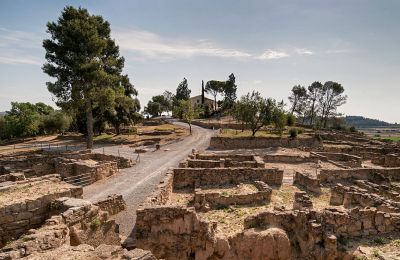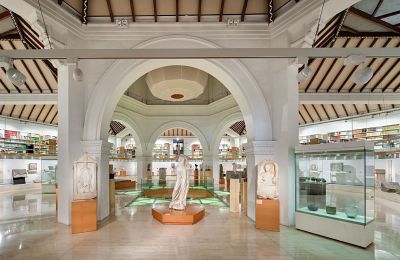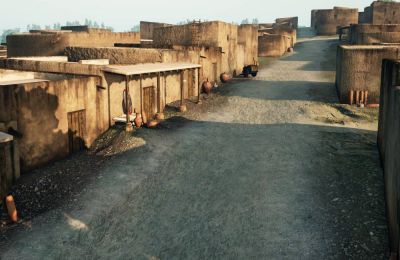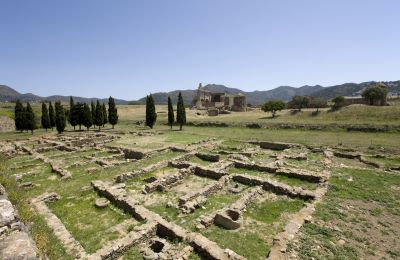Since its initial founding, the Government of Catalonia has always placed specific importance on our archaeological heritage. For this reason, in 1980 the Department of Culture created the Archaeology Service, which has been focused ever since on the management of archaeological heritage, at all times bearing in mind the essential task of archaeologists in the different aspects of such management, yet particularly in relation to documentation, inventory, protection, knowledge, prevention and research.
Years later, the Catalan Agency for Cultural Heritage was created with the aim of raising public awareness of archaeological heritage, through the Archaeology Museum of Catalonia and the archaeological sites of the Government of Catalonia.
Archaeology plays a fundamental role in our society, as it provides us with insight to our past and enables us to make that knowledge available to the general public, as a vehicle to reflect the future. Without returning that past to society, it is impossible to understand the work of archaeologists in bringing to light the different aspects of the life and constructions of our ancestors.
MORE THAN 12,000 ARCHAEOLOGICAL SITES
With more than 12,000 inventoried sites, archaeological heritage can be found throughout all of the Catalan region, providing cultural enjoyment and work opportunities to many people. In the last several years, more than 800 archaeological interventions were carried out annually, and though most of those interventions were preventative, they have all provided a great deal of information. What’s more, over 150 archaeological sites around Catalonia have been converted into museums and are now open to the public.
RECOGNITION
Catalonia constantly provides the world with important archaeological research information that has been acknowledged by the scientific community. Moreover, the Catalan region boasts a rich cultural heritage that ranges from prehistoric caves and cave art to the monuments of the modern era, while including the Iberian culture, the ancient Greek city of Empúries, the Roman past and the medieval world.
CREATION OF COMPANIES
Over the last thirty years, archaeology has served as the driving force for the creation of companies that specialise in preventive archaeology, cultural outreach and other activities related with the sector.
NEW TECHNOLOGIES
The archaeology in Catalonia draws on the opportunities provided by the digital world, through the incorporation of new technologies that aid in both the documentation of the archaeological remains and their presentation to the public. These tools are being put to use increasingly more frequently.
INTERDISCIPLINARY SCIENCE
In its work, archaeology constantly crosses over into other fields, as it is an interdisciplinary science that cannot be understood strictly through the work of archaeologists. Rather, archaeologists often work in cooperation with professionals of different fields including biology, geology, anthropology, architecture, communication, and others.
Years later, the Catalan Agency for Cultural Heritage was created with the aim of raising public awareness of archaeological heritage, through the Archaeology Museum of Catalonia and the archaeological sites of the Government of Catalonia.
Archaeology plays a fundamental role in our society, as it provides us with insight to our past and enables us to make that knowledge available to the general public, as a vehicle to reflect the future. Without returning that past to society, it is impossible to understand the work of archaeologists in bringing to light the different aspects of the life and constructions of our ancestors.
MORE THAN 12,000 ARCHAEOLOGICAL SITES
With more than 12,000 inventoried sites, archaeological heritage can be found throughout all of the Catalan region, providing cultural enjoyment and work opportunities to many people. In the last several years, more than 800 archaeological interventions were carried out annually, and though most of those interventions were preventative, they have all provided a great deal of information. What’s more, over 150 archaeological sites around Catalonia have been converted into museums and are now open to the public.
RECOGNITION
Catalonia constantly provides the world with important archaeological research information that has been acknowledged by the scientific community. Moreover, the Catalan region boasts a rich cultural heritage that ranges from prehistoric caves and cave art to the monuments of the modern era, while including the Iberian culture, the ancient Greek city of Empúries, the Roman past and the medieval world.
CREATION OF COMPANIES
Over the last thirty years, archaeology has served as the driving force for the creation of companies that specialise in preventive archaeology, cultural outreach and other activities related with the sector.
NEW TECHNOLOGIES
The archaeology in Catalonia draws on the opportunities provided by the digital world, through the incorporation of new technologies that aid in both the documentation of the archaeological remains and their presentation to the public. These tools are being put to use increasingly more frequently.
INTERDISCIPLINARY SCIENCE
In its work, archaeology constantly crosses over into other fields, as it is an interdisciplinary science that cannot be understood strictly through the work of archaeologists. Rather, archaeologists often work in cooperation with professionals of different fields including biology, geology, anthropology, architecture, communication, and others.





